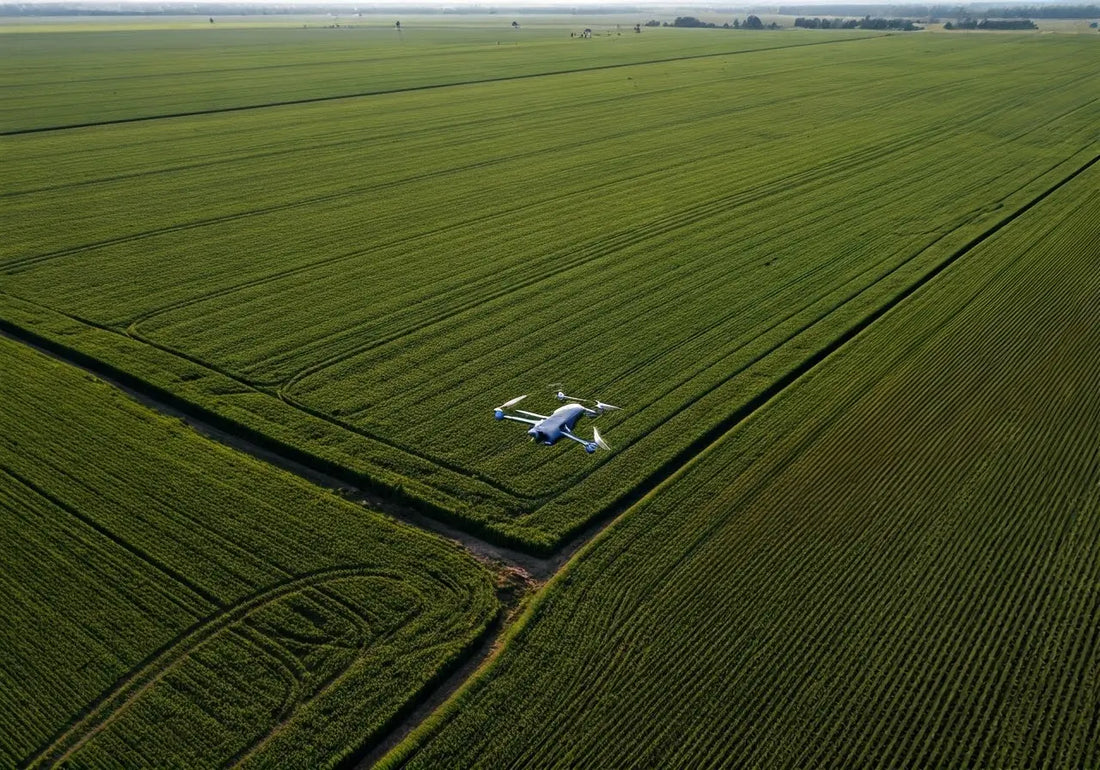
How Does Drone Crop Analysis Benefit Farmers?
Share
In today’s fast-paced world, technology is transforming agriculture, making it more efficient and productive. One such innovation is drone crop analysis. But how exactly does it benefit farmers? Let’s dive into this fascinating topic and explore the various advantages that drones bring to modern farming.
What is Drone Crop Analysis?
Drone crop analysis involves the use of unmanned aerial vehicles (UAVs) equipped with cameras and sensors to monitor and assess crop health, growth, and farming conditions. This cutting-edge technology provides farmers with a bird’s-eye view of their fields, facilitating informed decision-making.
At the core of drone crop analysis are high-resolution imaging and advanced sensors. These tools allow for the collection of detailed data on soil conditions, plant health, and environmental factors impacting growth. This technology turns data into actionable insights, empowering farmers to make precise adjustments in their practices.
Drone technology is not just about capturing stunning aerial views. It’s about transforming those views into detailed maps and actionable data. By combining various types of data, such as infrared imaging and 3D terrain models, drones provide farmers with a comprehensive understanding of their land.
How Does Drone Crop Analysis Work?
Drones capture images and collect data on various crop parameters such as soil moisture, plant health, and pest infestations. This data is then processed using advanced software to generate detailed maps and reports, offering insights into crop performance and potential issues.
The process begins with a flight plan that covers the areas of interest. Equipped with multispectral sensors, drones hover over fields, capturing data that reveal differences in plant health invisible to the naked eye. These sensors can detect stress signals in crops, such as water deficiencies or disease onsets, enabling early intervention.
Once the drone has completed its flight, the collected data is analyzed through sophisticated algorithms to produce clear, easy-to-read reports. These reports highlight critical areas in need of attention, such as sections suffering from inadequate irrigation or pest activity. This analysis helps farmers execute timely and targeted measures to address specific issues.
What Are the Key Benefits of Drone Crop Analysis?
Drone crop analysis offers numerous advantages, including precision farming, increased efficiency, and reduced costs. It allows for early detection of problems, helps optimize resource usage, and ultimately contributes to higher yields and better-quality crops.
One major benefit of drone technology in agriculture is its ability to enable precision farming. By targeting specific sections of a field, farmers can apply fertilizers, water, and pesticides only where necessary. This selective application reduces wastage and minimizes environmental impact, all while boosting productivity.
Beyond productivity, drones vastly improve time management on a farm. Traditional field inspections are labor-intensive, but drones can quickly cover large areas, capturing detailed data in a matter of hours. This speed allows farmers to spend more time on implementing solutions rather than gathering information.
Reduced labor and resource costs are significant benefits associated with drone crop analysis. By automating what once was a manual inspection process, drones lessen the need for extensive manpower. Additionally, by using resources more judiciously, they contribute to lower operational costs and enhance profitability.
The integration of drones into farming also boosts sustainability. By lessening the dependency on chemical treatments through precision data, drones help maintain healthier ecosystems on and around farms. For instance, accurately applying pest control only to affected areas preserves beneficial insects and reduces chemical drift.
How Do Drones Help in Precision Agriculture?
Precision agriculture uses data-driven techniques to manage fields at a micro level. Drones play a crucial role by providing accurate and timely data, which helps farmers tailor their farming practices to specific areas, reducing waste and environmental impact while maximizing productivity.
With precise data from drones, farmers can pinpoint the exact amount and location for each type of input, be it water, fertilizers, or pesticides. This not only optimizes input usage but also ensures that crops receive the right treatment at the right time, leading to healthier yields.
Drones equipped with AI capabilities bring precision agriculture to a new dimension. Artificial intelligence can analyze large data sets to predict disease outbreaks or yield outcomes, empowering farmers to take preventative action and optimize their harvests ahead of time.
The use of drones in precision agriculture is a game-changer. It not only facilitates site-specific management but also supports sustainable farming practices by reducing chemical inputs and conserving water. This marriage of technology and agriculture is a pathway to a more environmentally-friendly way of farming.
What are the Cost Implications for Farmers?
While initial setup costs for drone technology might be a consideration, the long-term benefits far outweigh them. Drones can significantly lower labor costs, improve crop quality, and prevent loss due to pests and diseases, resulting in a strong return on investment over time.
Investing in drones might sound daunting initially, especially for smaller farms. However, the potential savings and efficiency gains can rapidly justify the expenditure. With drones, farmers often see reductions in manual labor costs and fertilizer application expenses, balancing out initial investments quickly.
One must also consider the scalability that drones bring to farming operations. As these devices become more widespread and technology advances, the costs associated with them are expected to decrease, further enhancing their affordability and making them accessible to a broader range of farmers.
Farmers should take into account not only the acquisition costs but also the potential maintenance and software update expenses. Engaging with a reputable provider like TJ Aerosense can ensure quality service and support, maximizing the lifespan of their investment.
Embrace the Future of Farming with Drone Technology
Drone crop analysis is revolutionizing the way farmers manage their fields, offering real-time insights, enhanced productivity, and significant cost savings. By adopting this technology, farmers can stay ahead of the curve, ensuring sustainable and profitable agricultural practices. It’s clear that drones are not just a futuristic tool but a practical solution for the challenges farmers face today.

